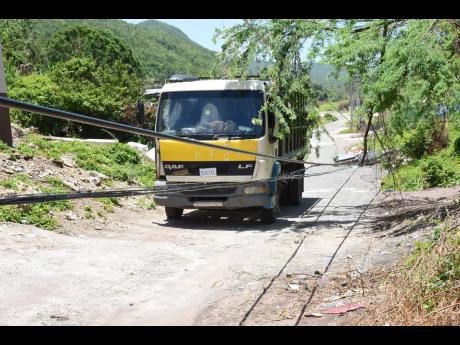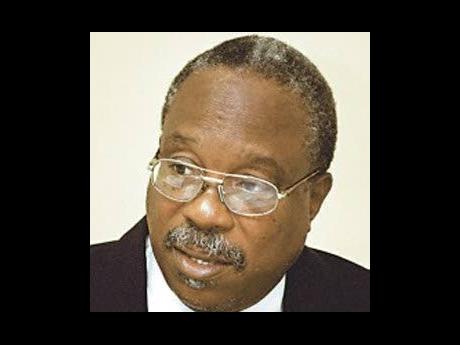Dennis Minott | Is it time for a strong government to unplug JPS?
Do we need a blueprint for energy reform?
The answer is ... absolutely!
I strongly support Carlton Fearon’s proposal in his letter to the editor to separate Jamaica’s power generation from transmission and distribution to enhance competition and efficiency in the energy sector. This aligns with the late Prime Minister Edward Seaga’s vision for energy reform from decades ago, demonstrating the enduring relevance of this approach.
Fearon presents several compelling arguments for this restructuring:
The current model, with the JPS handling both generation and distribution, creates a monopoly that leads to inefficiencies and poor customer service.
Separating generation from transmission and distribution would allow independent power producers to compete more effectively, potentially attracting greater investment in clean, renewable energy.
Splitting the JPS into multiple entities while maintaining existing ownership provides a smoother transition than quarrelling.
The Office of Utilities Regulation could oversee this process to ensure fair competition.
Governments have the authority to break up monopolies when they are detrimental to public interest.
Fearon’s and Enerplan/ Verse Siempre’s proposal addresses longstanding issues in Jamaica’s energy sector that Seaga also recognised. Seaga advocated for energy diversification and competition to reduce dependence on imported oil and to lower electricity costs. He supported initiatives to develop renewable energy sources and improve efficiency.
The proposed split would likely accelerate Jamaica’s transition to clean energy by allowing more players to enter the generation market. This could lead to increased investment in solar, wind, biomass, green hydrogen, and other renewables, aligning with global trends and Jamaica’s climate goals.
SUGGESTIONS
Fearon’s suggestions for stakeholder engagement, phased implementation, and consumer protections demonstrate a thoughtful approach to this complex issue. By separating generation from transmission/distribution, Jamaica has an opportunity to create a more competitive, efficient, and sustainable energy sector - a vision Seaga would have supported.
As the team leader of the Verde Siempre/Enerplan Group, which won a Rockefeller Foundation Prize for green renewables work before 1990, I have closely followed the foundation’s work in various countries, including Costa Rica and rural India. The current success of SPDR (smart power for development and rural electrification) in India is particularly fascinating. (Edward Seaga, Michael Manley, Horace Clarke, Peter Phillips, Robert Lightbourne, Alfred Sangster, Neville Gallimore, Howard Mitchel, Gloria Knight, Al Binger, Derrick Dyer, Franklin McDonald, Noel DaCosta, Robert Levy, John Golding, and Roderick Rainford were among the major public figures that – by request – discretely delighted in our award-winning biomass to 4F success.)
Building on Fearon’s proposal and drawing inspiration from successful models elsewhere, I recommend a bold approach for Jamaica in the wake of Hurricane Beryl: reforming the electricity supply into an array of well-managed, interconnectable mini-grids. This approach offers several compelling advantages:
• Geographical suitability: Jamaica’s mountainous island geography makes it well-suited for a distributed energy system. Mini-grids can effectively serve different regions of the country, potentially improving reliability and resilience.
• Renewable energy potential: Jamaica has significant potential for expanding wind, solar, hydroelectric, and biomass generation resources. Mini-grids can more easily incorporate these renewable sources, reducing reliance on imported fossil fuels.
• Improved reliability and resilience: Mini-grids can enhance the overall reliability of the power system, especially in the face of tropical cyclones. They can operate independently or interconnect as needed, potentially reducing widespread outages.
• Economic benefits: Mini-grids have been shown to contribute to economic growth by enabling new businesses and expanding existing ones. In rural areas, they can increase monthly revenues for micro-enterprises by about 12%.
• Cost-effectiveness: Solar mini-grids, in particular, have become increasingly cost-effective. The cost of electricity generated by solar mini-grids has decreased from $0.55/kWh in 2018 to $0.38/kWh today, with potential to reach $0.20/kWh by 2030.
• Social impacts: Access to reliable electricity through mini-grids can improve health, safety, agricultural, and education outcomes, particularly benefiting women and rural communities.
• Climate resilience: By leveraging renewable energy sources, mini-grids can help Jamaica reduce its carbon footprint and meet its climate goals.
• Technological advancements: Modern mini-grids now incorporate smart meters, remote management capabilities, and can support a wide range of appliances and machinery.
This approach draws inspiration from Puerto Rico’s response to Hurricane Maria in 2017. Puerto Rico’s utility has proposed dividing the island into eight mini-grids as part of its long-term energy plan. This strategy aims to create a more resilient and decentralised power system, designed to isolate problems and prevent island-wide blackouts. In the event of a major disaster, each mini-grid would be able to operate independently, ensuring that at least some areas maintain power.
AMBITIOUS APPROACH
For Jamaica, I propose a similar but more ambitious approach:
• Divide the island into 10-12 interconnectable mini-grid zones, each capable of operating independently if needed.
• Prioritise renewable energy sources for each mini-grid, with a focus on solar, wind, and biomass, depending on local resources.
• Implement smart grid technologies for efficient management and rapid fault isolation.
• Encourage private sector investment in both generation and mini-grid operation, fostering competition and innovation.
• Develop a comprehensive regulatory framework to ensure fair pricing, quality of service, and environmental standards.
• Invest in workforce development to create jobs in renewable energy and smart grid technologies.
• Launch public education campaigns to engage communities in energy conservation and the benefits of the new system.
• Establish a phased implementation plan, starting with pilot projects in areas most vulnerable to power outages.
This bold approach would not only address the immediate challenges highlighted by Hurricane Beryl but also position Jamaica as a leader in sustainable and resilient energy systems. It aligns with global trends in renewable energy, supports economic development, and enhances energy security. By learning from experiences like Puerto Rico’s and adapting them to Jamaica’s unique context, we can create a more robust, flexible, and resilient power system for the future.
The time for incremental change has passed. Jamaica needs a transformative approach to its energy sector, one that combines the vision of intellectuals like Seaga and Fearon with the latest technological advancements and global best practices. This mini-grid strategy represents such an approach, offering a path to a more sustainable, reliable, and prosperous energy future for all Jamaicans.
This column is dedicated to the memory of the late Dr Cynthia E. Lewis, my and our best colleague, ever.
Dennis Minott, PhD, is the CEO of A-QuEST-FAIR. He is a multilingual green resources specialist, a research physicist, and a modest mathematician who worked in the oil and energy sector. Send feedback to a_quest57@yahoo.com or columns@gleanerjm.com


